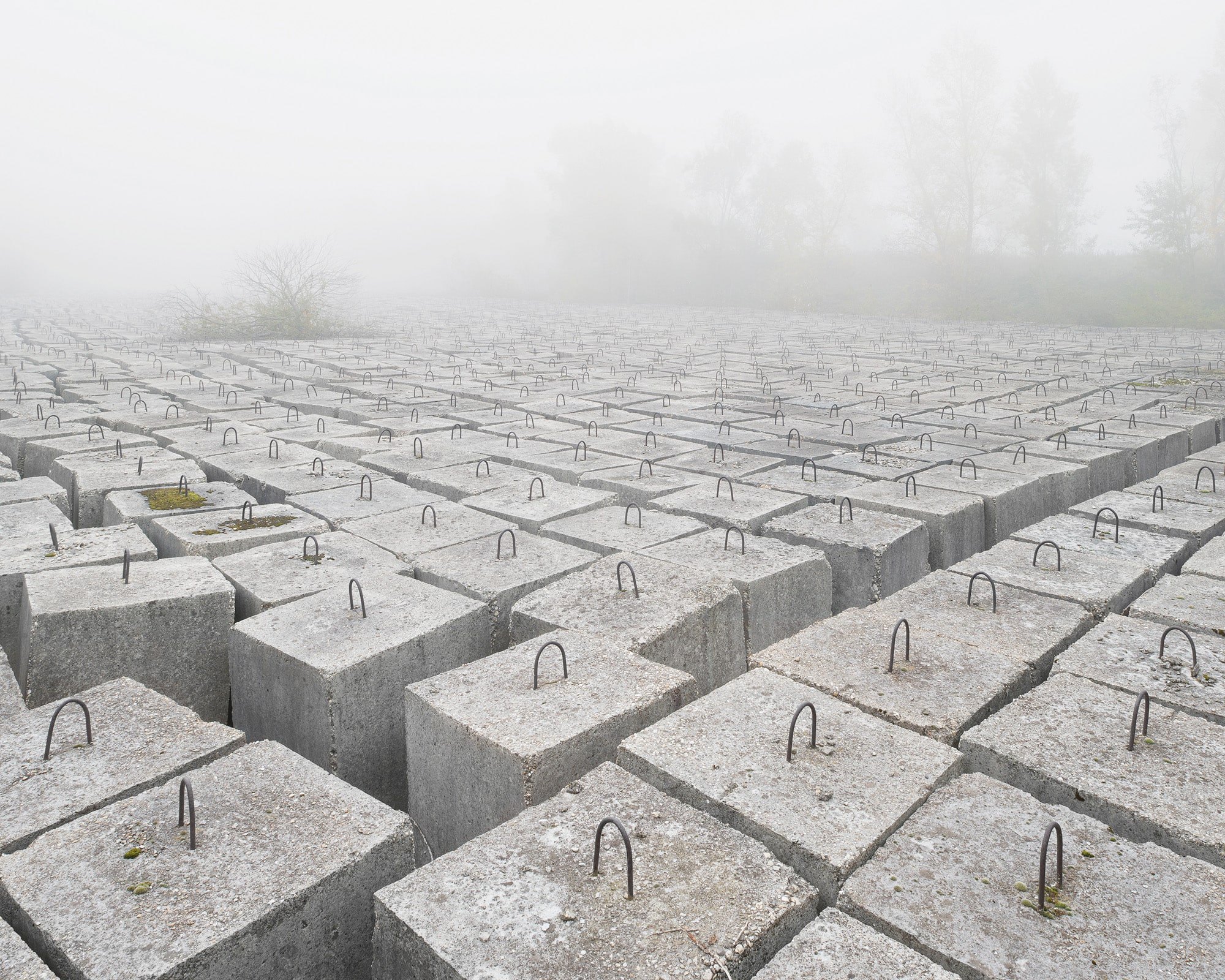
Deposit of concrete blocks at Dunakiliti dam, 2015
Towards an Understanding of Anthropocene Landscapes
Artist and photographer Axel Braun collects case studies on contentious infrastructure projects in order to trace humanity’s development as a geological force. His studies focus on human-altered landscapes as byproducts of discourses and processes that describe the technosphere as it brings forth the Anthropocene. Braun’s growing anthology of examples invites readers to complement the artist’s selection with their own observations and experiences.
Humans transform their environment to satisfy their growing needs. The suggestion of the Anthropocene is a critical reminder that there are indeed limits to growth. Facilitated by technological progress, a growing world population is leaving its mark on the planet. By improving its living conditions and shaping the world, humanity has created an inescapable web of factual laws that leaves little option to start all over again.
The following selection of case studies on controversial infrastructure projects aims to illustrate discourses and processes that describe humanity’s advancement towards the Anthropocene. Large constructions, like dams, land reclamation, or canals are examples for interrelated structures that constitute the technosphere and determine its further expansion.
Water management is one of the oldest forms of engineering that has been central to civilizations for millennia. It provides interesting cases to trace the progress from cultivation of land and the defense of living spaces against natural forces towards the redesign of entire environments with numerous ecological, social, economic, political, and geological implications.
Dragonflies Drift Downstream on a River
Do we build a house forever?
Do we make a home forever?
Do brothers divide an inheritance forever?
Do disputes prevail [in the land] forever?
Do rivers rise in floods forever?
Dragonflies drift downstream on a river,
their faces staring at the sun
Then suddenly there is nothing.Benjamin R. Foster, trans., The Epic of Gilgamesh, Tablet X, lines 307‒314.
New York: W. W. Norton & Company, 2001, pp. 82f.
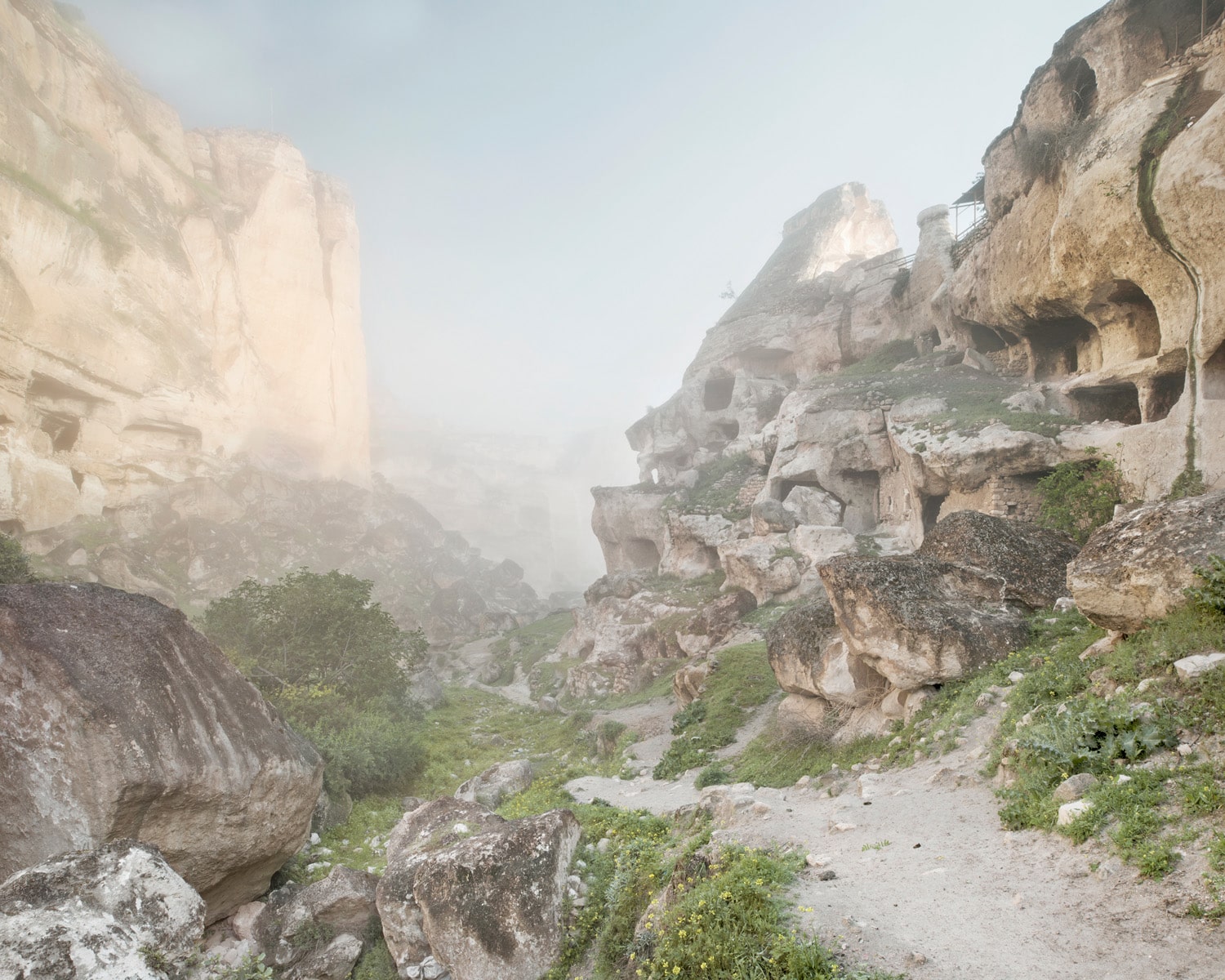
large
align-left
align-right
delete
Img. 01 Cave mansions, Hasankeyf, 2014
Hasankeyf is a small town in Southeast Anatolia at the Northern fringes of ancient Mesopotamia. The settlement bears traces of several thousand years of history. Located on the Silk Road, at a crossing point of the Tigris River, the castle and settlement became a center of trade and a meeting point for early civilizations. Numerous ruins and remnants from medieval times characterize the old town today and illustrate the wealth and power of the past. Hundreds of human-made cave mansions cover the canyons around the castle rock and create impressive sceneries. The archaeological sites are the main assets for tourism, a modest source of income for the local population. Mainly Kurdish and Arab communities inhabit this economically and structurally weak part of Turkey, many of them leading traditional lives based on subsistence agriculture. The region has been stuck in uncertainty for decades, as plans to build a dam and flood the valley have been announced and postponed repeatedly by Turkish authorities. The Ilisu Dam, about seventy kilometers downstream at the border with Iraq, will drown significant parts of Hasankeyf in its reservoir. This barrage is one of the last unfinished facilities of the Southeast Anatolia Project (GAP), a scheme of twenty-two dams, tunnels, and canals in the catchment areas of the Euphrates and Tigris. The Atatürk Dam is the most famous asset in operation.
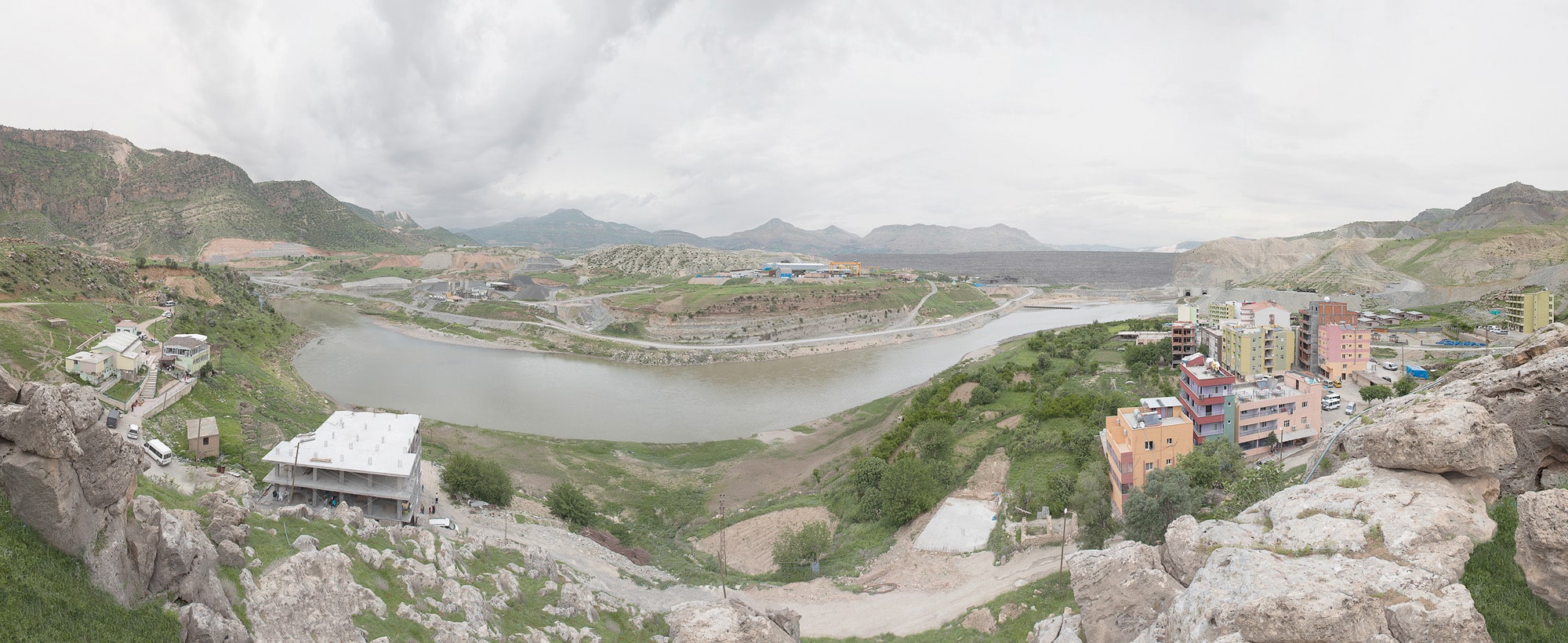
small
align-left
align-right
delete
Img. 02 Construction site of Ilisu dam, Ilisu, 2014
Officially, the GAP fosters the economic development of Southeast Anatolia by providing energy and irrigation water for arid land. Critics object to these aims, as the already existing dams have shown that building these infrastructures mainly served the economic elites in the West of the country, while irrigation caused soil salination. Thus, the Turkish government and military are suspected of having different ambitions: installing large-scale reservoirs in the most important rivers of the region promises geopolitical power. The GAP entitles the Turkish government to control significant parts of the drinking water supply of Iraq and Syria. This aspect has been matter of diplomatic controversies for decades.
The project has been delayed repeatedly, e.g. after European states withdrew their funds and insurances due to public protests or Turkey’s failure to comply with comparably loose World Bank standards. However, the Turkish government found the means to finance the construction on its own and European engineering companies continued to provide the technology and expertise that nowadays finds little demand and acceptance in their home countries.
H
delete
Video 01 Interview with Firat A. (owner of a bed & breakfast in Hasankeyf), 2014
Meanwhile, the local population refuses to change its traditional ways of life for the apartment blocks in New Hasankeyf: the hastily built settlement has been marked by decay even before the first inhabitants moved in. Nevertheless, the requested prices exceed the announced compensation for their old farms and houses by far. Rising poverty and migration are expectable consequences.
Technology Must be Cruel in order to Assert Itself
Technology must be cruel in order to assert itself.
In many cases, however, it has the power to alleviate
and to shield piety from the purity of nature.Author unknown, Die Kraftzentrale im Schwarzwald, Vorwärts (28 December 1928)
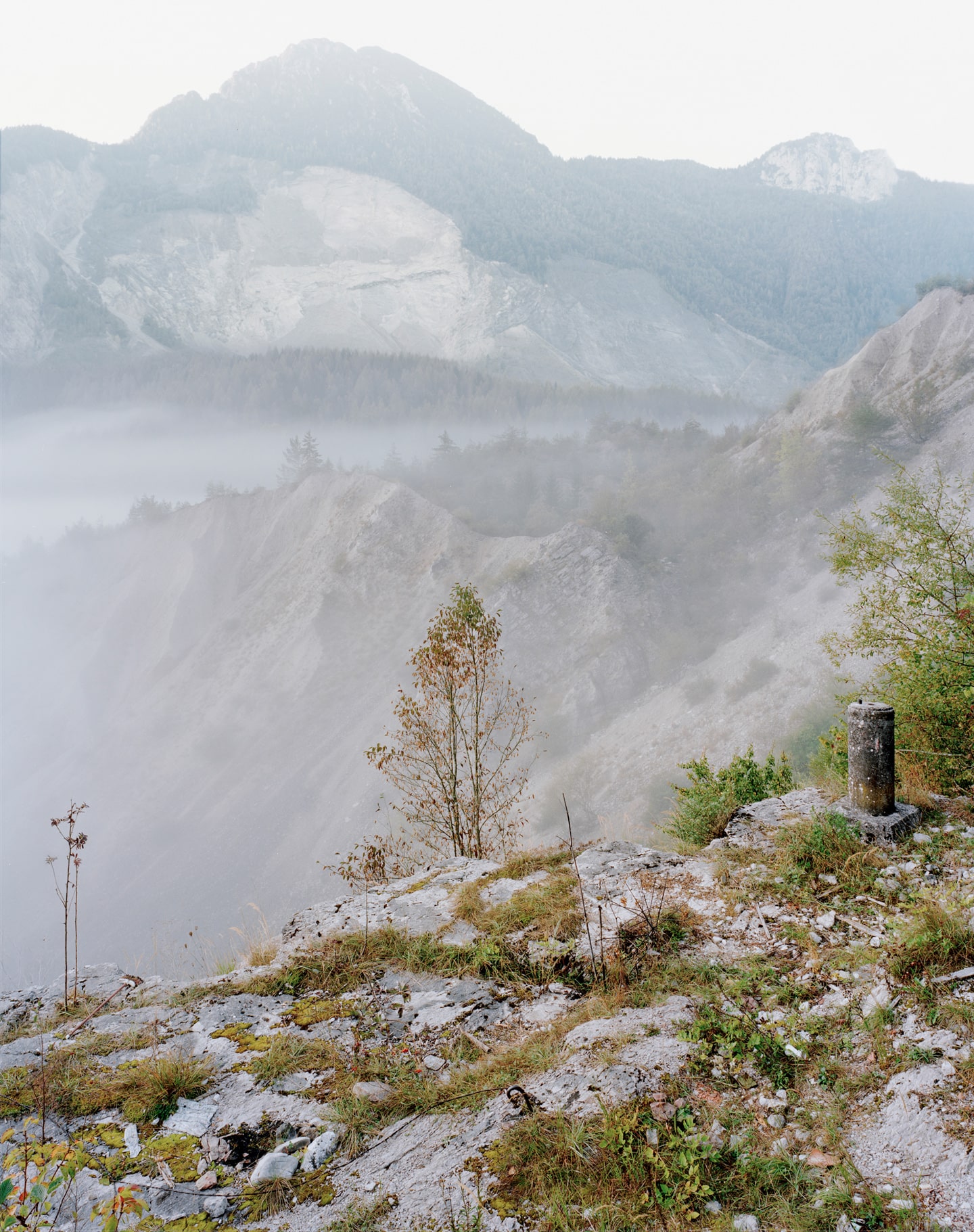
large
align-left
align-right
delete
Img. 03 Remnants of the landslide, Monte Toc, Vajont, 2011
The Vajont Dam in Northern Italy was planned by a private energy company with ambitions to sell the asset to the state after completion. Although experts and locals protested against the plans and warned of unfavorable geological conditions, the constructions were pushed ahead unscrupulously during the 1950s. Critics were silenced in court trials and unfavorable surveys were concealed in order to realize profits as soon as possible.
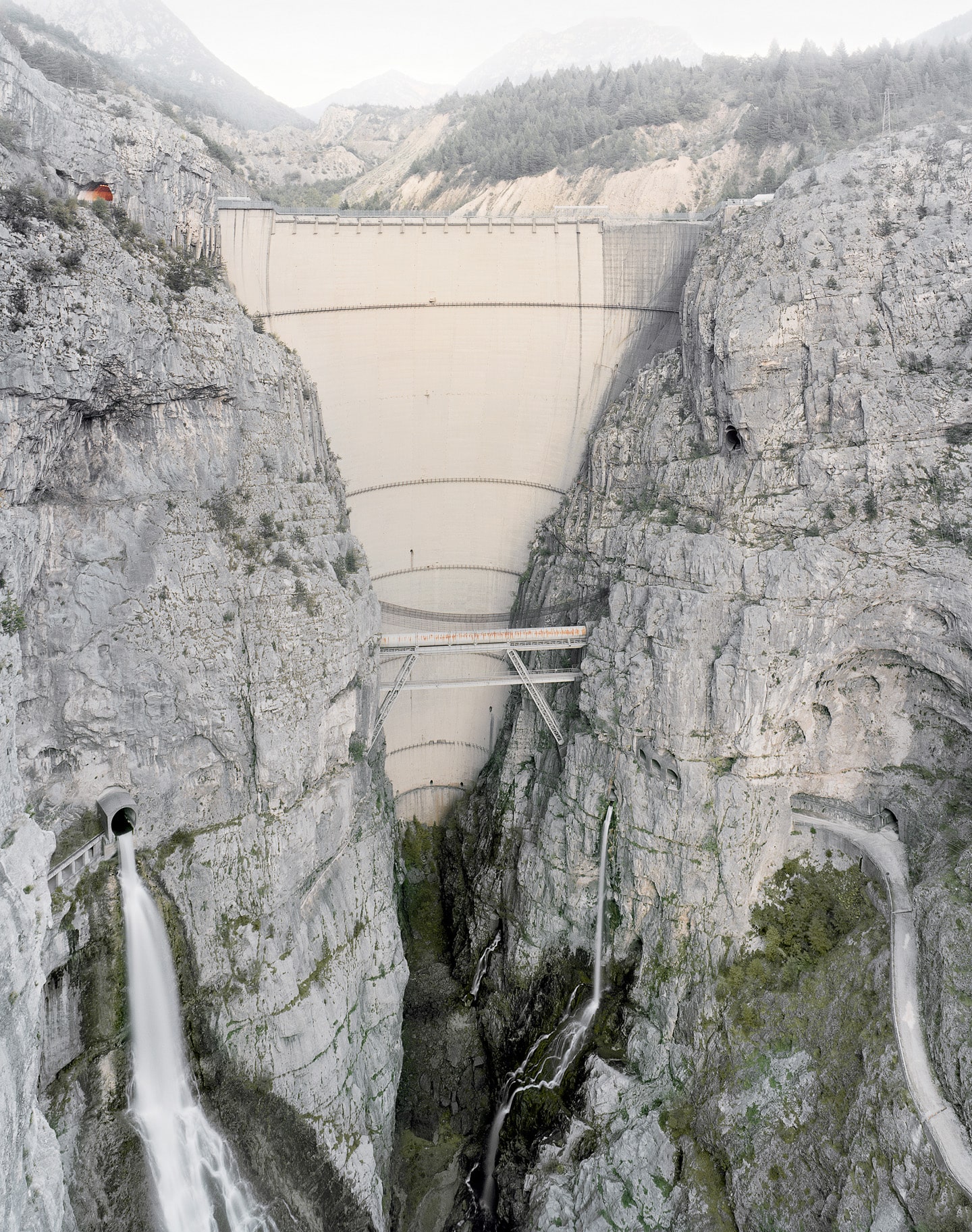
large
align-left
align-right
delete
Img. 04 Diga del Vajont dam wall, 2011
The resulting dam wall appears impressively light given its overall height of more than 250 meters: an elegant parabolic concrete construction that might have become an icon of engineering had it not caused a tragedy in 1963. During one of the test fillings of the freshly completed reservoir, the collected water caused a massive landslide, which made the barrage spill over and resulted in a tidal wave that wiped out Longarone at the foot of the Vajont gorge.
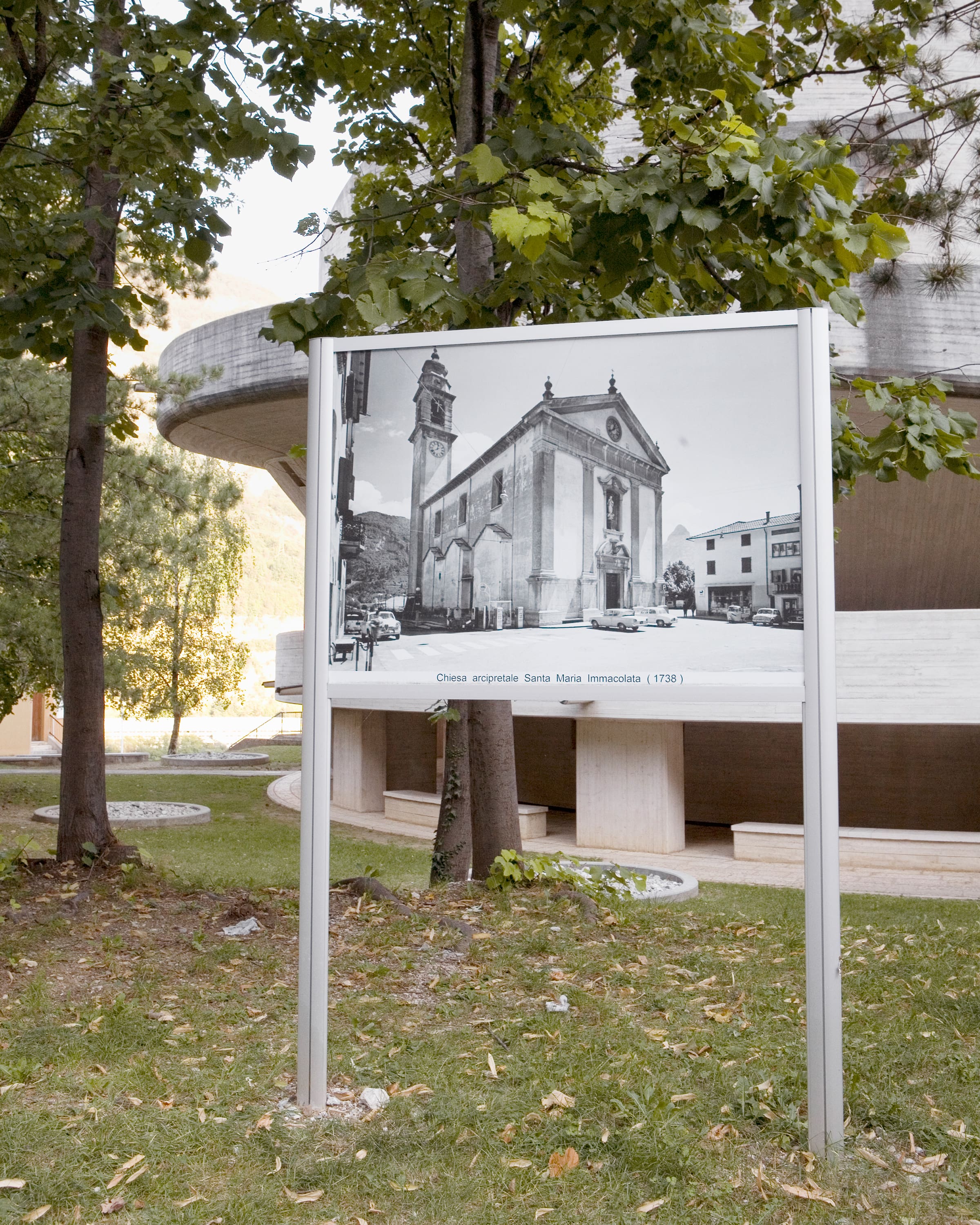
large
align-left
align-right
delete
Img. 05 Chiesa Santa Maria di Immacolata, Longarone, 2011
Visiting the valley can still provide an impression of the tragedy’s impact almost fifty years later. Apart from the devastated landscape slowly being covered by vegetation, and the remaining dam wall becoming a monument for the chasms of human greed and hubris, the rebuilt town center of Longarone was striking: constructed in a particularly robust interpretation of béton brut, each building seemed to express the trauma, as well as the fear that events might repeat themselves.
Nothing is Impossible in a Place
Where Dreams Become Reality
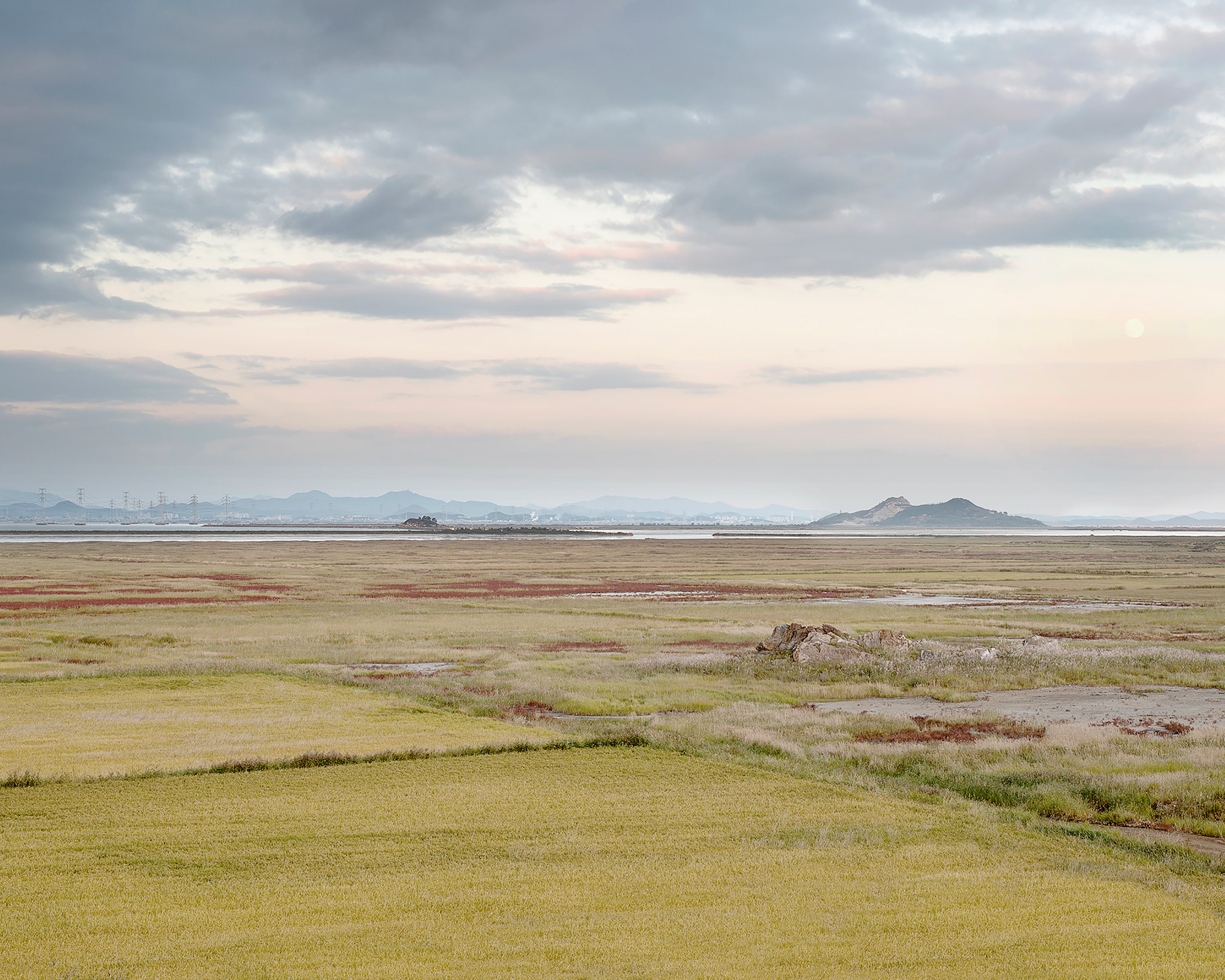
large
align-left
align-right
delete
Img. 06 View from Daebudo over lake SiHwa, 2012
On the South Korean peninsula, further expansion of urban areas is restricted by geological conditions. Large-scale land-reclamation activities along the Western coast are the consequence, especially in the agglomeration around Seoul. Many former islands and bays have become part of the mainland during the last decades. The island Daebudo in Gyeonggi Bay, for example, was connected to the mainland by a twelve-kilometer-long dam in 1994.
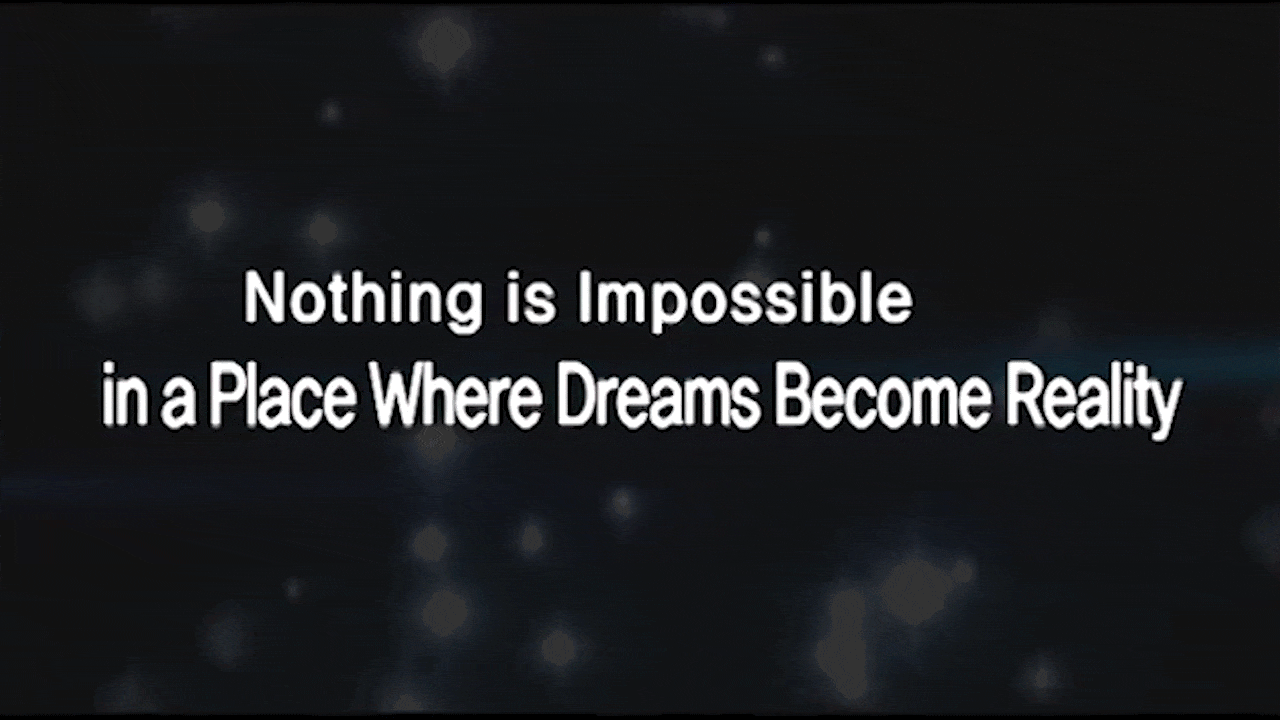
small
align-left
align-right
delete
Video 02 SiHwa Lake Tidal Power Plant, Daewoo E&C, DVD, 17‘07“, 2007
The aim was to turn the dammed saltwater bay into a freshwater reservoir and to facilitate land reclamation along the shores, a scheme comparable to the Ijsselmeer in The Netherlands. Because of insufficient purification facilities in a densely populated region, the endeavor soon became an ecologic disaster. Opening the dam to have the polluted Si-Hwa Lake washed out by the tides, appeared as the only solution. Eventually the dam and the bay became the world’s largest tidal power plant, in order to lead the infrastructure back to profit and reputation.
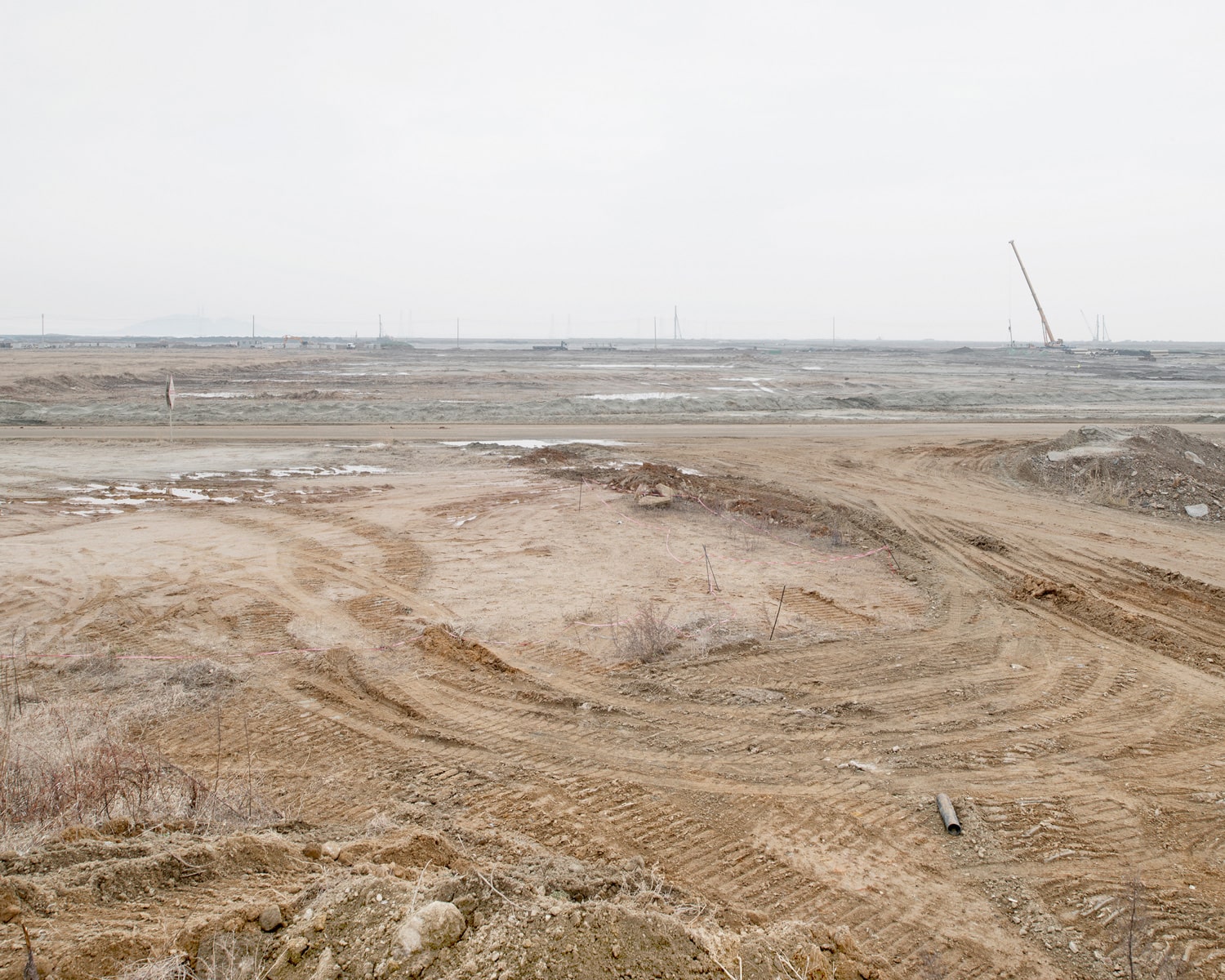
large
align-left
align-right
delete
Img. 07 Construction site of SiHwa Technological Valley, 2012
On the other side of the bay, the planned city New Songdo was established on a land-reclamation site that allegedly replaced a bird sanctuary. Nevertheless, architects and investors advertised the future free-trade zone as particularly sustainable: because of smart technologies, New Songdo City will have 30 percent less carbon dioxide emissions than a conventional city of its size.
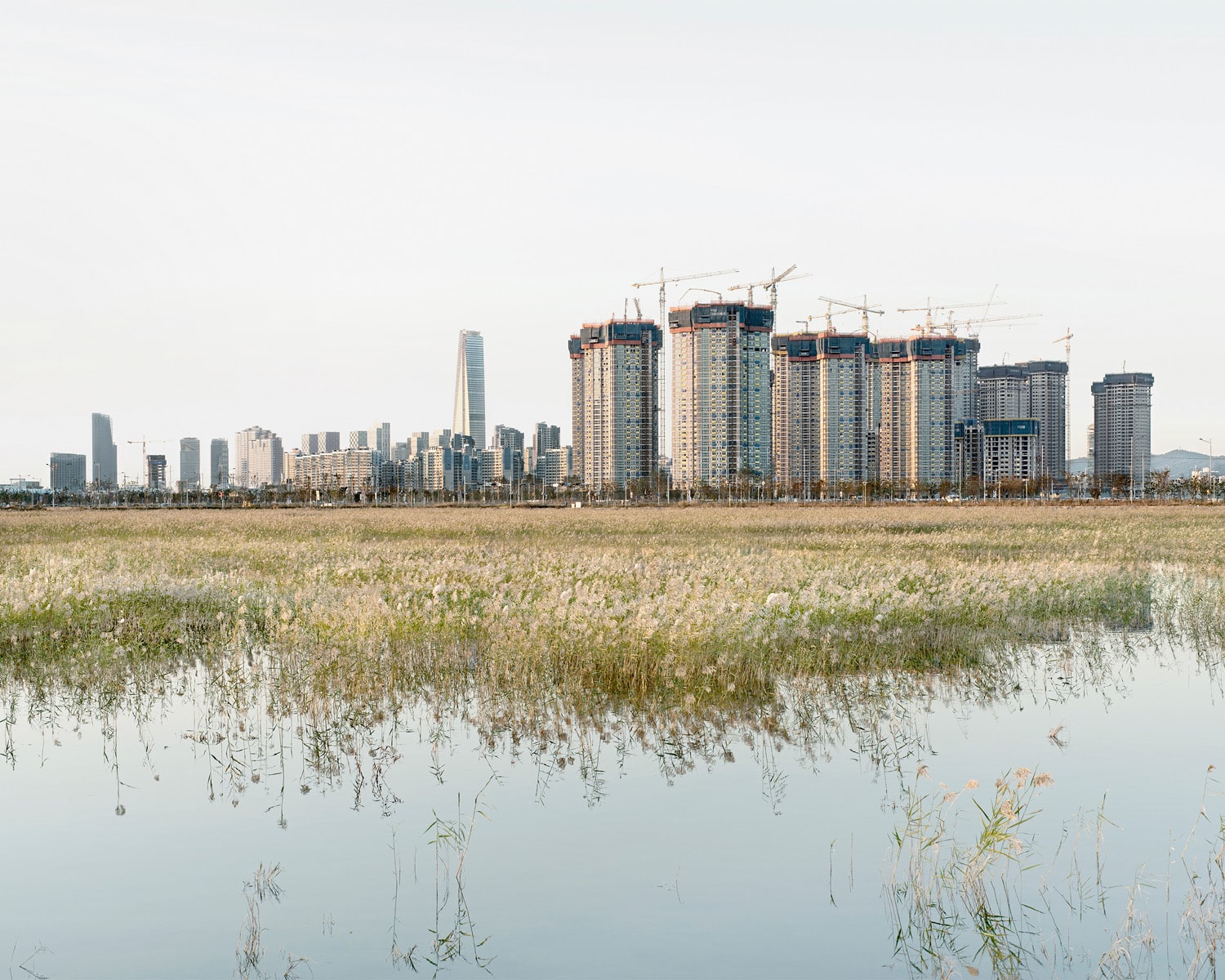
large
align-left
align-right
delete
Img. 08 Construction site of New Songdo City, 2012
In 2012, the construction works were delayed and those parts that were already completed resembled a ghost town. The global financial crisis had left clear marks on a site promoted as the future business hub for Northeast Asia. One of the few assets already in operation was the Jack Nicklaus Golf Club course suitable for international tournaments. Once the anticipated growth returns, New Songdo is well prepared: numerous plots for further constructions are available, idly awaiting their future purposes in a rectangular grid of unfinished streets.
DMZ – Natural Mineral Water
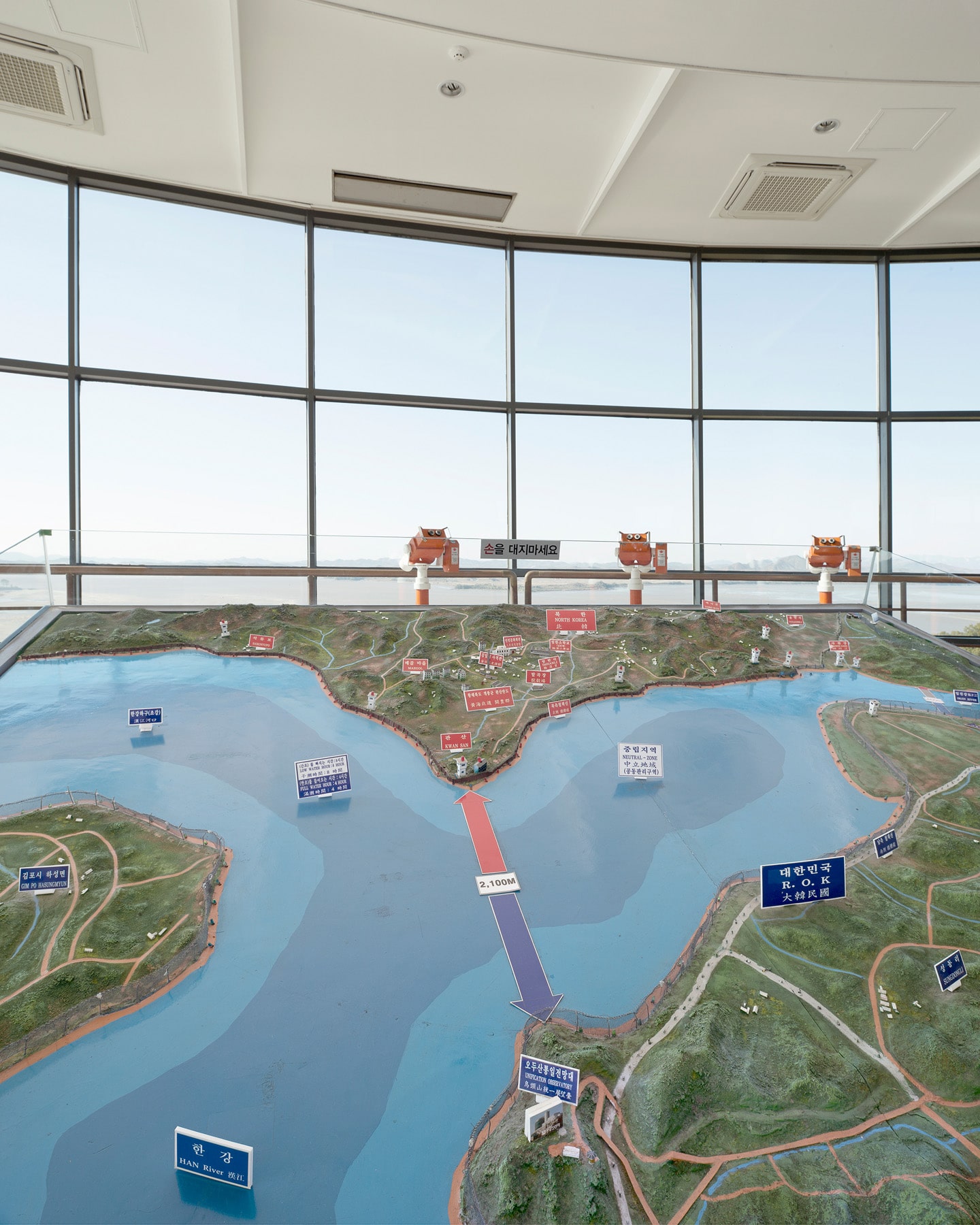
large
align-left
align-right
delete
Img. 09 Scale model, Odusan Unification Observatory, 2012
The Demilitarized Zone (DMZ) is a buffer zone between North and South Korea that has been completely closed to any human access. Reportedly, a remarkable ecosystem has developed in the fenced-off and heavily land-mined landscape since the cease-fire of 1953. For decades, a real-live experience of the mountains, rivers, and floodplains was unimaginable; that was until the DMZ Eco-Peace Park opened in 2016, inviting ecotourism. The pristine nature in the exclusion zone has inspired marketing campaigners for some time.

large
align-left
align-right
delete
Img. 10 DMZ – Natural Mineral Water, LOTTE, 2012
Allegedly obtained from underneath the demarcation line, DMZ Natural Mineral Water provides a nice example of the human desire to leave no natural resource untapped. Furthermore, it illustrates a growing nostalgia for the pureness of nature in an expanding technosphere.
And Who Steps into this Realm Will be Enchanted
by the Spirit of a New Age
There have been complaints by elderly people
that everything has developed to the current state.
They say that the industry has taken away
the intimate appeal from the lovely Emscher valley.
Indeed, we can understand this point of view,
just we do not see it justified. Of course, the poetic
charm has disappeared but even before it was just
present for those few who had time and delight to search
and enjoy it. [...] Overviewing the landscape from an elevated
point [...] [still] reveals a fabulous image [...] At its glance
everybody feels that a new time is coming, and who steps
into this realm will be enchanted by the spirit of a new age.“An der Emscher,” Essener Volkszeitung, Stadtarchiv EVZ 43 (1910) v 11.6., Haus der Essener Geschichte, trans. Axel Braun
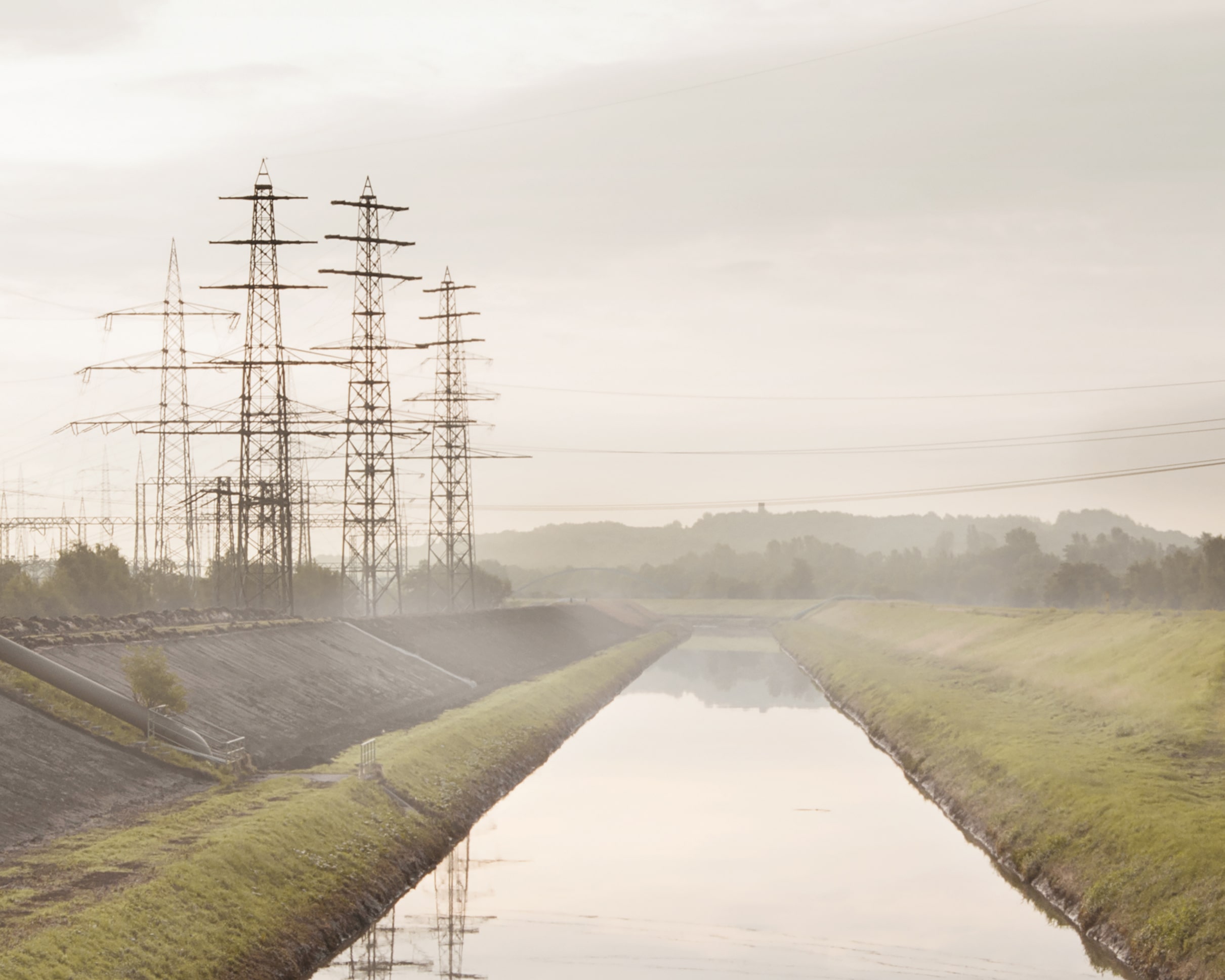
large
align-left
align-right
delete
Img. 11 Regulated Emscher, Essen, 2014 (excerpt)
The Emscher River in the Northern Ruhr area, Germany’s former industrial center, was a shallow stream that found its meandered course through forests and flood plains until the nineteenth century, when industrialization changed its fate within decades. Already heavily polluted by unfiltered industrial and domestic sewage waters from the growing agglomeration, the river became increasingly affected by submergences of ground that facilitated floods and turned whole parts into toxic lakes and swamps. At a time when smoking chimneys were a symbol of power and prosperity, a dying river would not have been reason for concern; until that is, the calamities became a threat to industrial assets and workers’ health. After years of debates about who should cover the costs, a cooperative of private and public stakeholders was formed at the beginning of the twentieth century.
H
delete
Video 03 Construction site of Abwasserkanal Emscher, 2014
Full canalization and diking of the river, relocation of the estuary, and the establishment of hundreds of pumping stations appeared as the only solution for the disastrous situation. After completion, the resulting hydrological scheme served as the main, open sewer for the entire industrial region during the rest of the twentieth century.
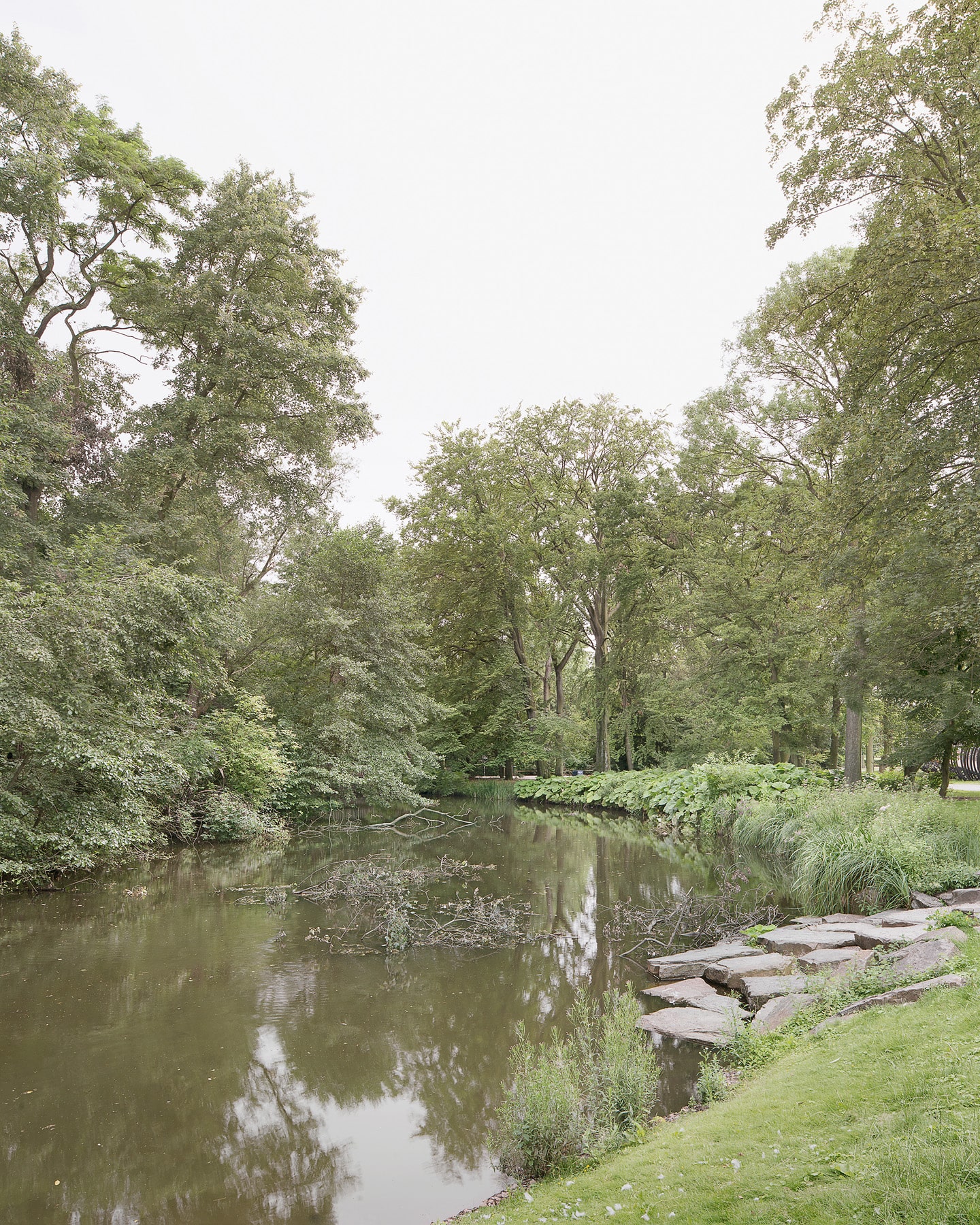
large
align-left
align-right
delete
Img. 12 Oxbow of river Emscher, Kaisergarten, Oberhausen, 2014
Since coal mining ended, an even higher technological effort is currently undertaken to disentangle river and sewage water again by drilling a seventy-kilometer-long tunnel and reshaping sections of the river landscape to achieve a more natural appeal. The only remaining branch of the original river that survived as a pond in a park was restored in 2010. Although now stagnant, it is a lone memorial to a lost river and landscape.
A Pathway for MillenniaUn drum pentru milenii, is the title of a Romanian propaganda film for the Danube‒Black Sea Canal, author unknown, 1980s. Archive of ADMINISTRATIA CANALELOR NAVIGABILE S.A., Agigea.
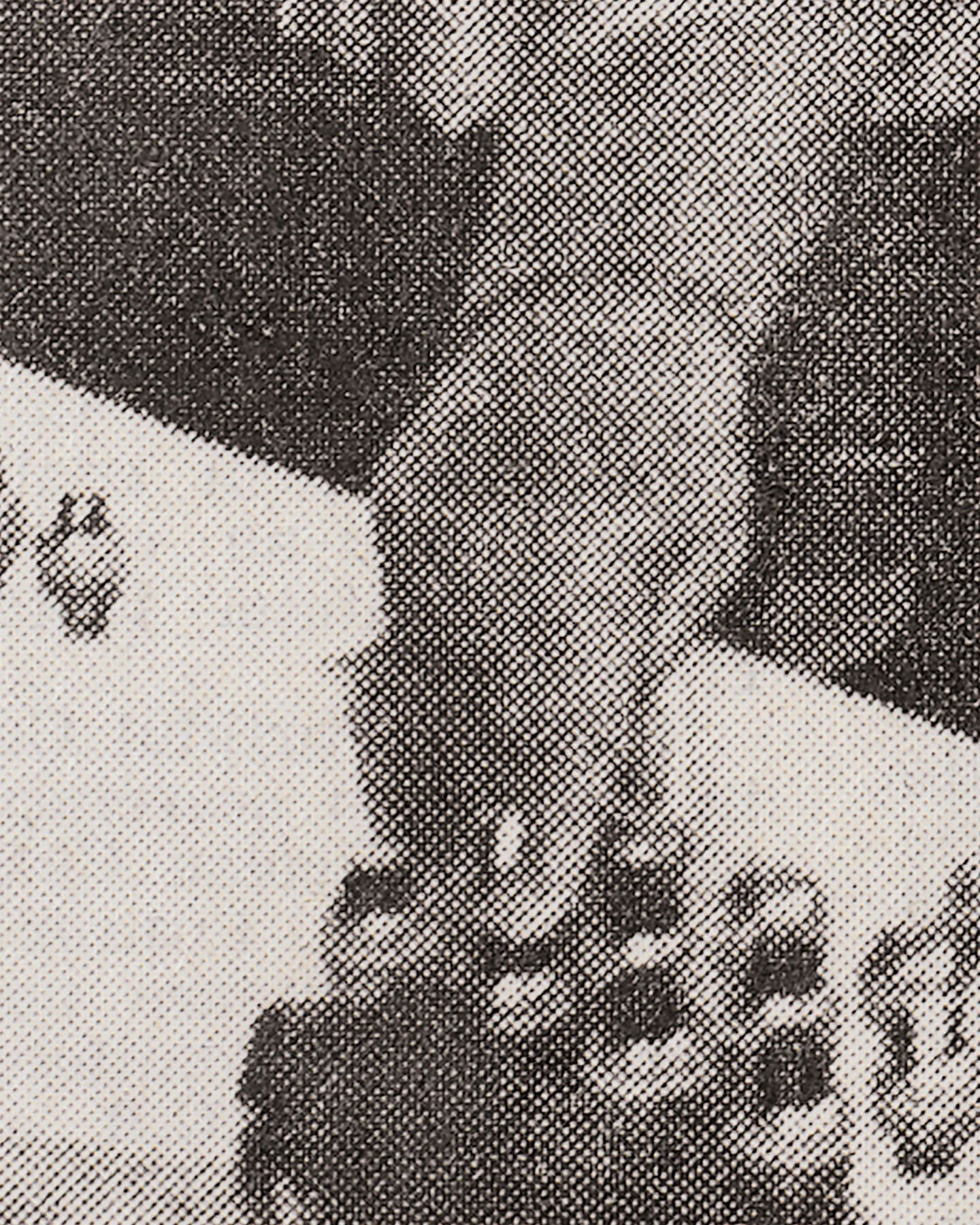
large
align-left
align-right
delete
Img. 13 Nicolae Ceauşescu inaugurates the first branch of the Danube-Black Sea canal, 1984
„TOVARASUL NICOLAE CEAUŞESCU A INAUGURAT IERI CANALUL DUNARE-MAREA NEAGRA“, Scinteia, 27 May 1984, p.3
On its way from Serbia to the Black Sea, the Danube forms the border between Bulgaria and Romania for several hundred kilometers. Shortly before the river reaches the sea, an elevation in the Dobrogea region directs the river for about 300 kilometers to the North, before it arrives at the Black Sea. Since the nineteenth century, plans were developed to correct “nature’s mistake” by building a Danube‒Black Sea Canal to create a direct connection to the seaport of Constanta. Both Austrian and British enterprises distanced from their ambitions quickly, due to the extreme technical challenges. After the Second World War and establishment of the communist regime in Romania, the plans were reassessed in order to use the construction site as a forced labor camp to eliminate the old elites. Again, the canal project was deemed unrealizable after a few years, and work was halted, until Nicolae Ceauşescu made the canal his prestige project in the 1970s. Mobilizing the military and numerous volunteers eventually allowed him to inaugurate the two branches in 1984 and 1987.
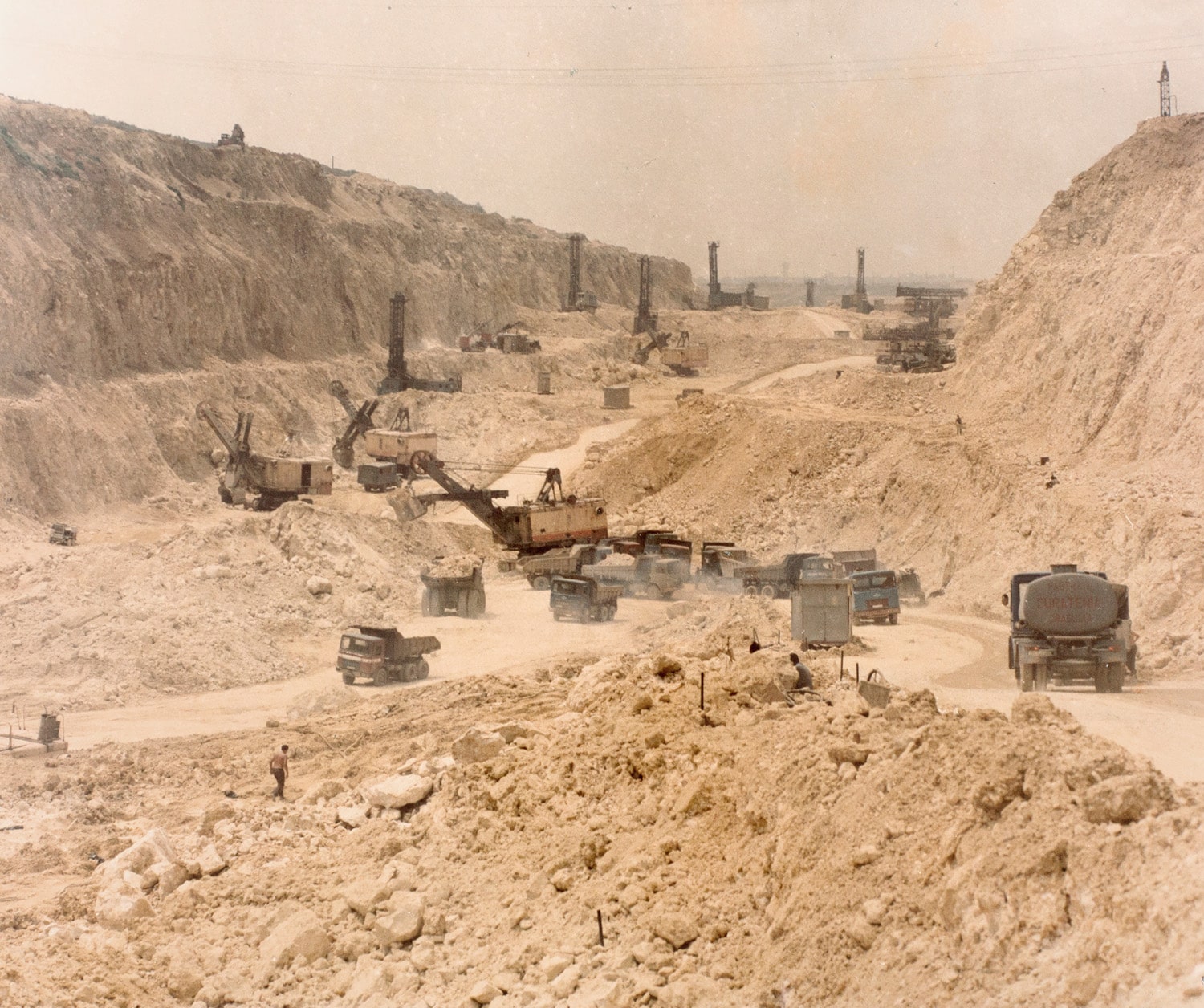
large
align-left
align-right
delete
Img. 14 Construction site of the Danube-lack Sea canal, 1980s
9. ZONA km.12 + 500. VEDERE SPRE POARTA ALBA – MIDIA, NAVODARI; MTTC-IPTANA, „Canalul Poarta Alba – Midia, Navodari“, Album Fotografic, etapa I, 1987; Archive of ADMINISTRATIA CANALELOR NAVIGABILE S.A., Agigea
The canal was supposed to establish the communist dictator as an important actor in world trade. However, comparing the canal to projects of similar size, like the Suez Canal or Panama Canal, makes it appear rather irrelevant today.
Nevertheless, the appeal of pushing the right buttons in order to split mountains still does not seem to have fallen out of fashion among authoritarian leaders worldwide.
Some Kind of Opposition
H
delete
Video 04 A műtargy (The Object), Fekete Doboz, VHS, 46’30”, 1988, Copyright by Marta Elbert
Committee secretary János Berecz . . . spoke of a ‘certain group’ which was ‘moving in the direction of some kind of opposition.’“B-WIRE / 02-JUN-86 04:59,” 2 June 1986. HU OSA 300-40-1: 276/3; Energetika, Erőművek, Vízerőmű, Bős- Gabčíkovo Gabcikovo-Nagymaros, 1986 [3 of 3]; Records of Radio Free Europe/Radio Liberty Research Institute; Donald and Vera Blinken Open Society Archives at the Central European University, Budapest [At the time of the statement János Berecz was a member of the Hungarian Socialist Workers’ Party and the central committee secretary for ideology. He was seen as a possible successor of János Kádár.]
The majority of events connected to the controversy around the Gabčíkovo‒Nagymaros Dam System in Hungary and Czechoslovakia took place in the 1980s and early 1990s, yet the conflict remains unresolved to the present day. The planned scheme of three dams was to redirect and alter the Danube drastically on a stretch of about 200 kilometers according to a bilateral agreement from 1977. Next to the undisguised announcement that the planned redirection would dry out Europe’s last remaining inland delta Szigetköz, the prospect of building the Nagymaros Dam in the Danube Bend, a landscape of national identification, mobilized Hungary’s first environmental initiative, the Duna Kör (Danube Circle), founded by biologist János Vargha in 1984. In the beginning, the group used Samizdat underground publications to protest against both dams. Despite oppression during the early years, the movement kept growing and the political climate of perestroika made possible large protests and petitions with more than 100,000 signatures in 1988. Duna Kör reached its biggest success in 1989: Hungary’s socialist government suspended the construction of the Nagymaros Dam, and its democratic successors discarded the project completely in 1991.
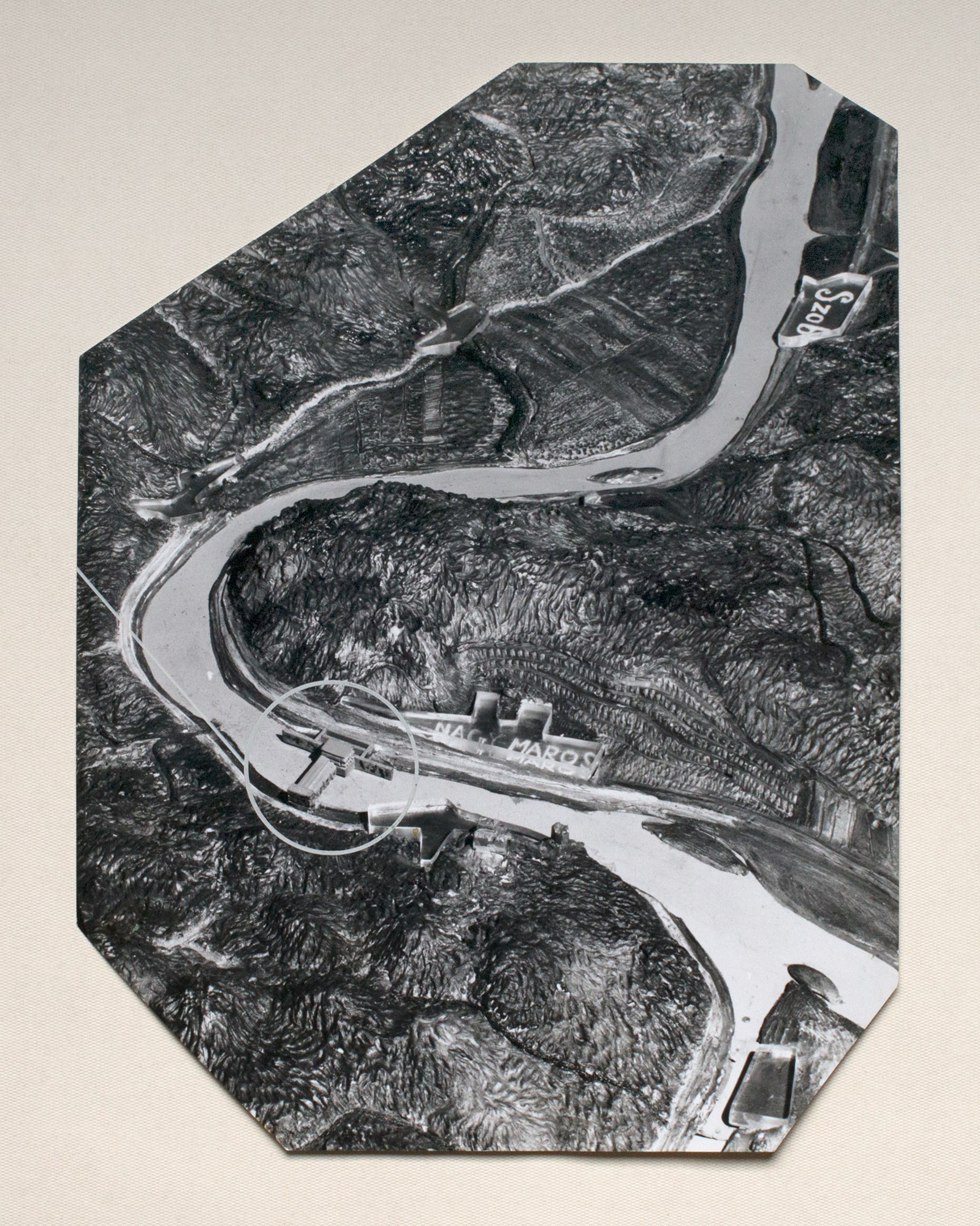
large
align-left
align-right
delete
Img. 15 Scale model of the Nagymaros dam in the Danube bend, 1950s
“Ábra alsó része” [lower part of the picture], undated
Környezetvédelmi és Vízügyi Levéltár Budapest
While not building the dam became a symbol for democratization in Hungary, completing the scheme became a symbol for nation-building in newly independent Slovakia, whose aim was to achieve energy autonomy. Consequently, Slovakia continued alone in the early 1990s. The Danube was redirected towards the Gabčíkovo Power Plant near Bratislava. The major share of water was provided for the Slovak power plant, while the Szigetköz on the Hungarian side of the former border river dried up. Hungary accused Slovakia of environmental damage and Slovakia insisted on Hungary’s responsibility to comply with their bilateral agreement. As the dispute between the two countries could not be solved diplomatically, it was taken to the International Court of Justice in 1997 – without significant results. A bilateral conflict would have prevented the two countries from entering the European Union in 2004, thus the official debate was muted and unofficial solutions were found to share the current, in order to provide both electricity and maintain the threatened inland delta by technical means.
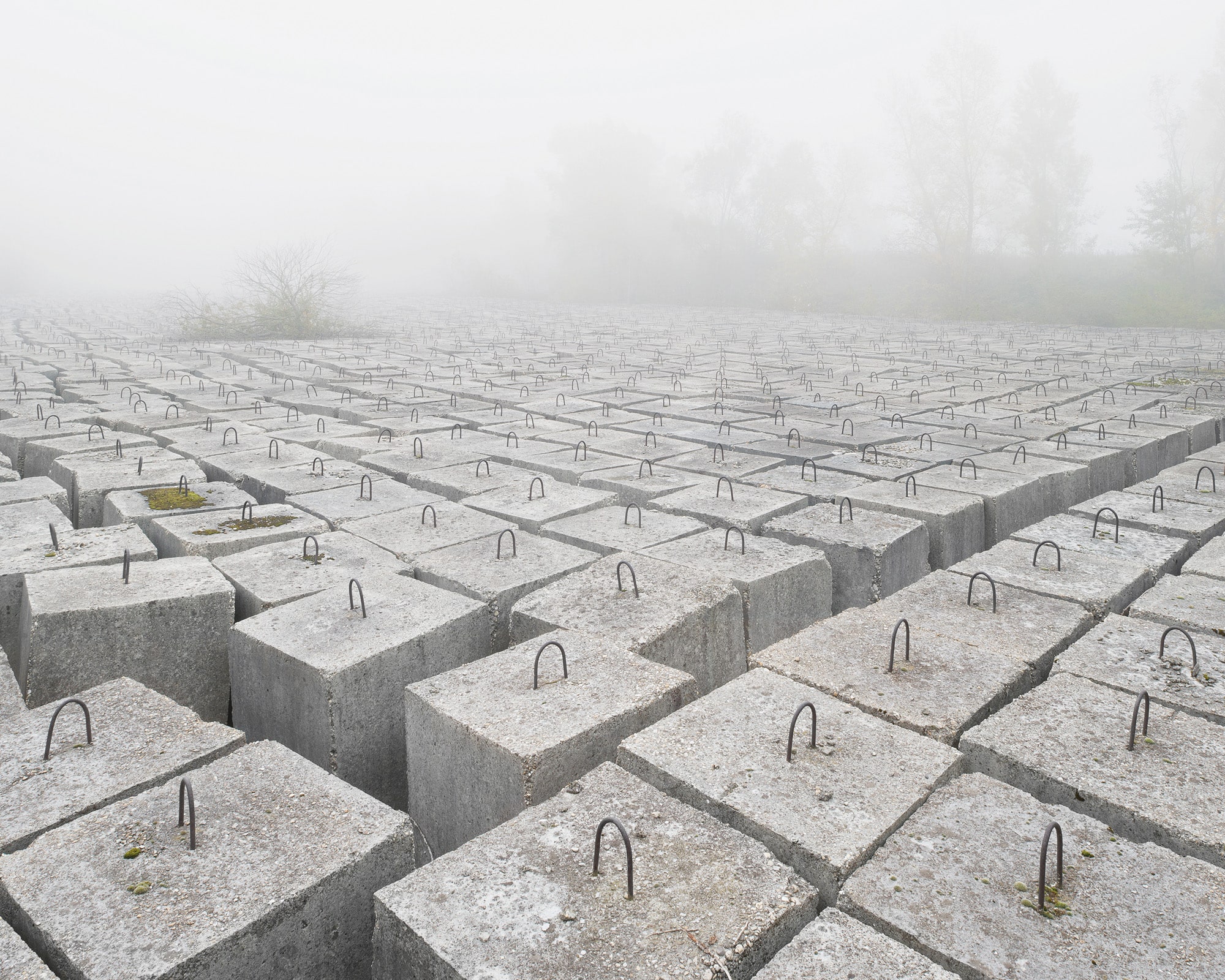
large
align-left
align-right
delete
Img. 16 Deposit of concrete blocks at Dunakiliti dam, 2015
The blocks were produced to build a gravity dam and redirect the Danube towards Slovakia. Due to conflicts between Hungary and Slovakia the river was redirected at a different location in 1993.
However, both the Slovak governments and the Hungarian far-right faction called for a renegotiation and completion of the dam project repeatedly. For decades, even touching on the topic was seen as political suicide in Hungary, as it was so closely related to the events of regime change and many politicians of post-socialist Hungary had built their careers on fighting the dam. So did Viktor Orbán and the FIDESZ movement that joined the environmental protest in 1988. However, since these young democrats have changed their agenda remarkably and the Visegrad 4 countries have grown closer in recent years, unofficial governmental consultations on the Gabčíkovo‒Nagymaros issue have been reported in 2016.
Towards an Understanding of Anthropocene Landscapes
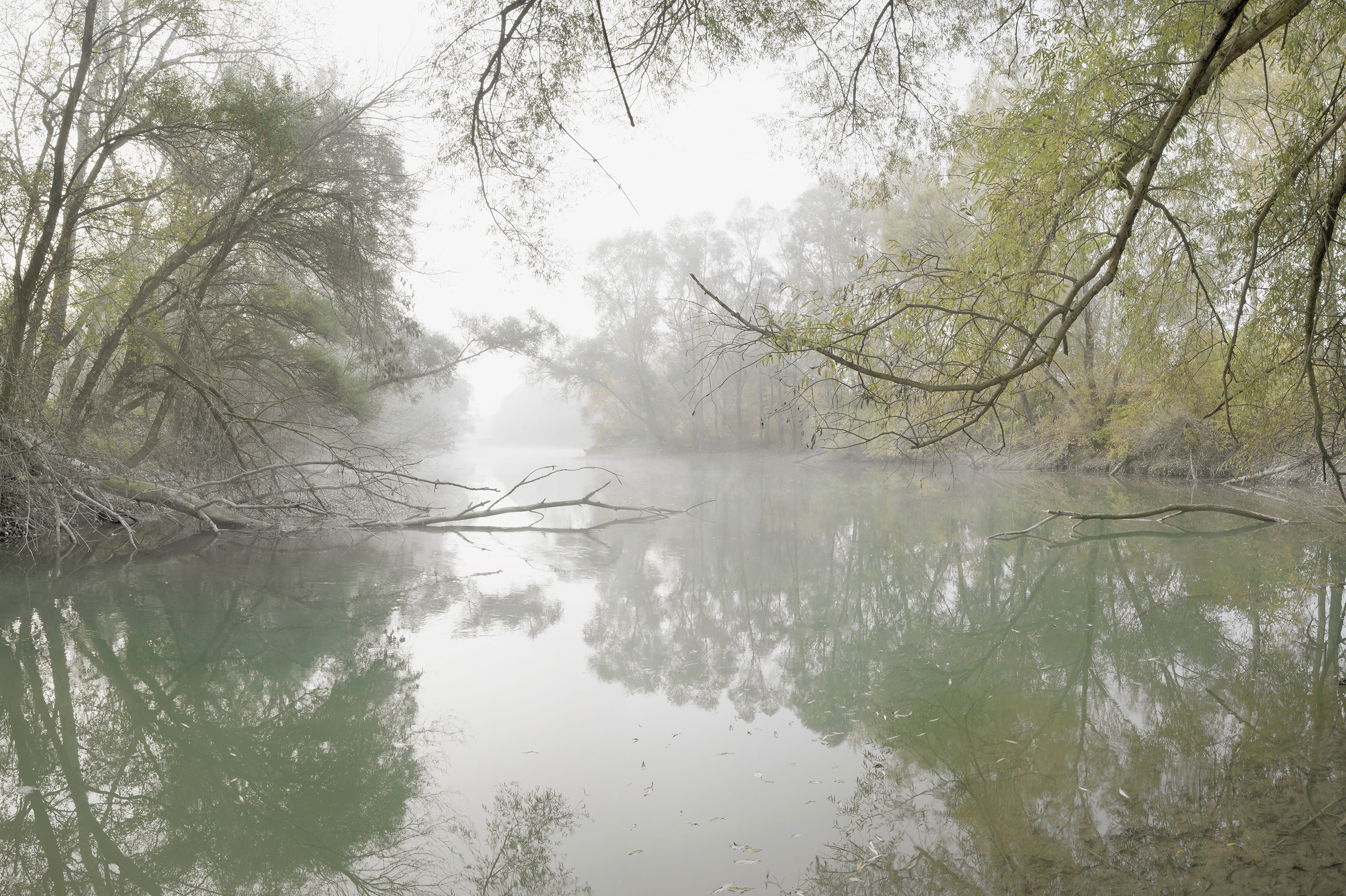
large
align-left
align-right
delete
Img. 17 Side arm of the Danube in the Szigetköz, 2015
Europe’s last inland delta could not exist without the water management of the Čunovo and Dunakiliti dams.
Apart from the political aspects we have encountered in the last case study, the Szigetköz provides an interesting example of how the technosphere maintains the biosphere by subordinating the latter into its structures. Since the construction of the dam system, the inland delta can only survive due to the water-management system provided by the dams. Hydro-engineers aim to simulate the more favorable water levels of the last decades, including seasonal droughts and floods, in order to provide the best conditions for an ecosystem that had almost been sacrificed to the dam scheme. However, it would be false to blame the dam system alone for the problems of the delta: the transformation of the Szigetköz had started centuries earlier, first in terms of land reclamation by local farmers, then joined by the dredging and diking of the Danube by Habsburg engineers in order to foster navigation and flood control. Long before the first dam constructions, weirs had to be installed to prevent the side-arms and oxbows from running dry, due to the fast-flowing current of the dredged-out main branch. This example describes the ongoing development of the technosphere as a multilayered process, which increasingly assimilates its predecessors.

small
align-left
align-right
delete
Img. 18 Control panel of the Rheinkraftwerk Albbruck-Dogern hydro power plant, 2011
Similar relations, consequences, or dependencies can be observed throughout the selection of the case studies described here. Often, a single interference in a natural system can make numerous additional reactions and regulations necessary, even if the original aim that started the chain reaction over time has been almost forgotten. As many disasters have shown, the increasing domination of the biosphere by the technosphere bears uncontrollable risks. Nevertheless, the technosphere will continue to extend and interconnect globally, forming the system that brought about the Anthropocene as well as the thrust for its further articulation.
The case studies that belong to the long-term project TOWARDS AN UNDERSTANDING OF ANTHROPOCENE LANDSCAPES have been supported by the Innogy Stiftung, Gyeonggi Cultural Foundation, Emscher Genossenschaft, Visegrad Fund, European Cultural Foundation, Goethe-Institut, Kunststiftung NRW, Vera and Donald Blinken Open Society Archives, and the Visual Studies Platform & Institute for Advanced Study at the Central European University, Budapest.
Unless indicated otherwise, the copyright holder for all texts and images is Axel Braun. Reproduction or publication requires the written permission of the author.
Copyright Axel Braun, 2017.